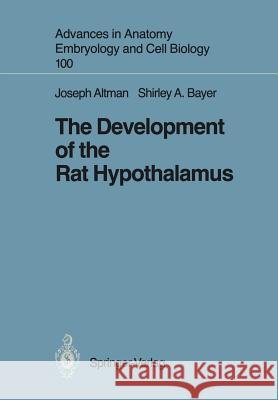The Development of the Rat Hypothalamus » książka
The Development of the Rat Hypothalamus
ISBN-13: 9783642713033 / Angielski / Miękka / 2011 / 180 str.
The hypothalamus is a vitally important component of the vertebrate nervous system, being involved in the regulation of the pituitary gland, the autonomic nervous system, and the central and peripheral motor systems; and implicated in such functions as reproduction, feeding, drinking, aggression, vigilance, and some other not clearly understood motivational processes. The development of the hypothalamus is generally recognized as an important field of inquiry, and many studies are available that deal with the biochemical, electrophysiologi- cal, morphological, and behavioral maturation of one or another component of this unique brain region. However, comprehensive studies of the development of the hypothalamus are scant. Some of the early attempts have been reviewed by Diepen (1962). Among the more recent studies, some in the context of de- scriptions of the development of the entire diencephalon, are those by Rose (1942) in the rabbit; Luyendijk (1944) and Niimi et al. (1962) in the mouse; Auer (1951) and Keyser (1972) in the hamster; Stroer (1956), Coggeshall (1964), and Hyyppa (1969) in the rat; and Gilbert (1953), Kahle (1956), and Richter (1965) in man. Thymidine radiography was utilized in the study by Ifft (1972) in the rat, Shimada and Nakamura (1973) in the mouse, and Wyss and Sripanid- ku1chai (1985) in the cat.











